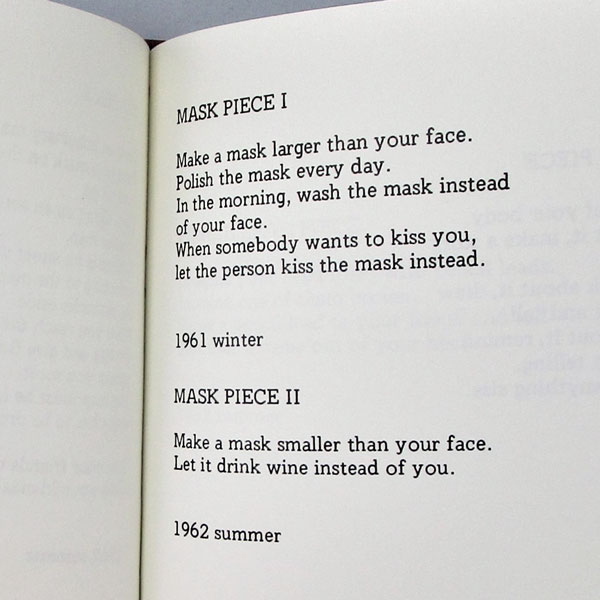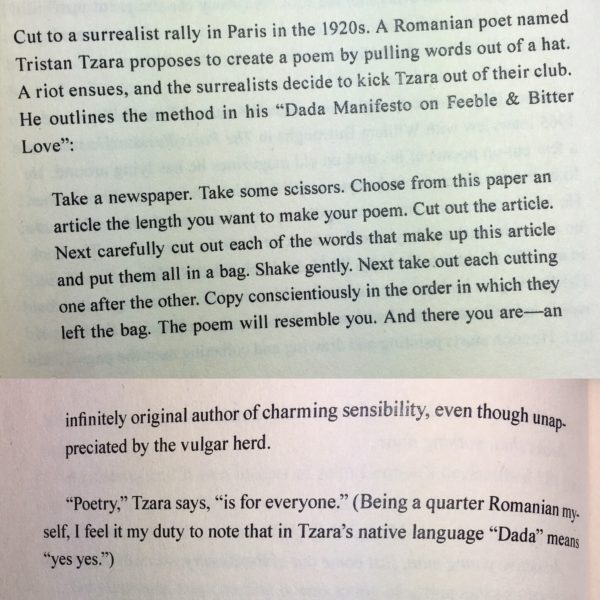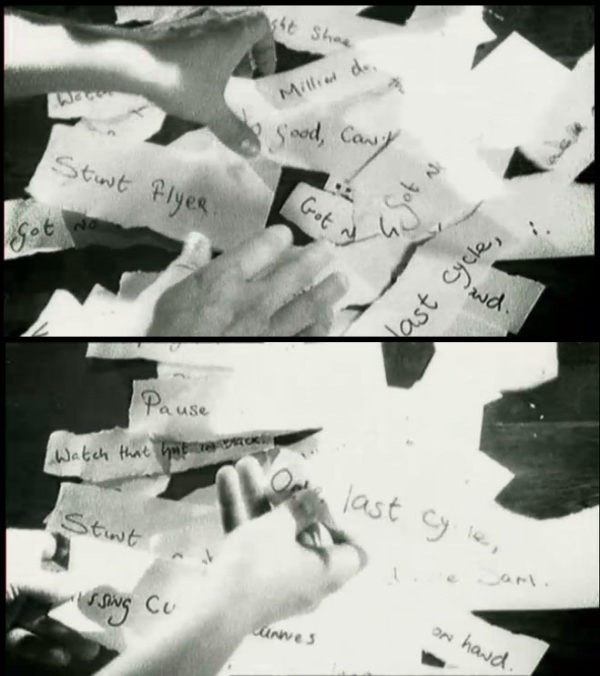
I like this description of poetry from John Carey in his book, A Little History of Poetry.
I’ve been thinking about another thing I love about poetry: its ability to change meaning, depending on the time and place and the person reading it. A poem that seems ho-hum one moment, seems perfect the next.
For example, here is a blackout I made in 2016:
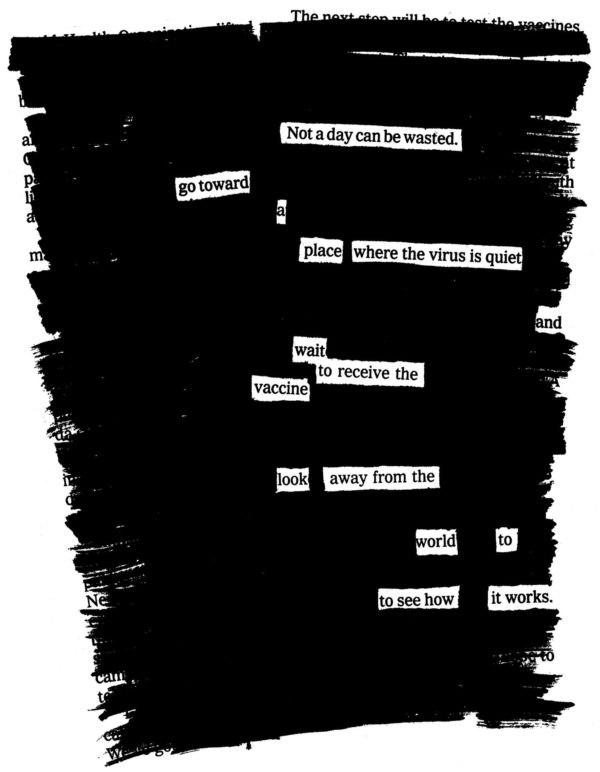
I had completely forgotten that one. I shivered a little when I read it. (Burroughs thought writing could be a kind of time travel or crystal ball reading.)
Here’s another blackout I came across that was cut from the final manuscript of Keep Going, made in 2013, but made quite new on day 50 of our family’s quarantine:
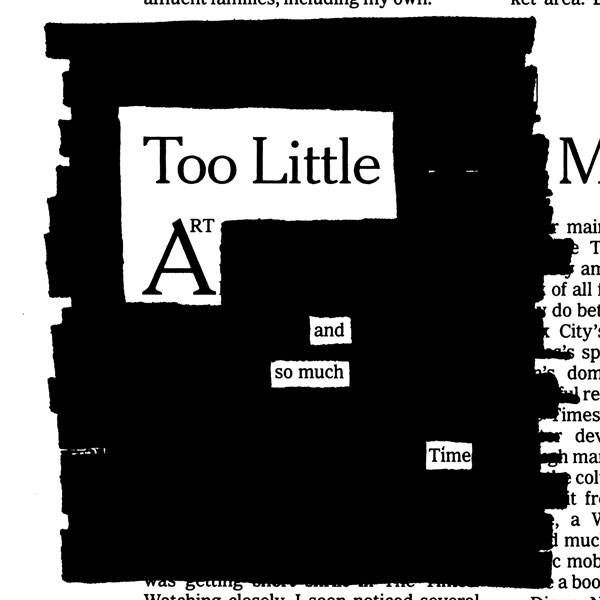
And finally, via this morning’s POME newsletter, here is a page from Yoko Ono’s Grapefruit:
I also like how the demand for poetry changes depending on the times we’re in: You think you don’t need it… until you do.
